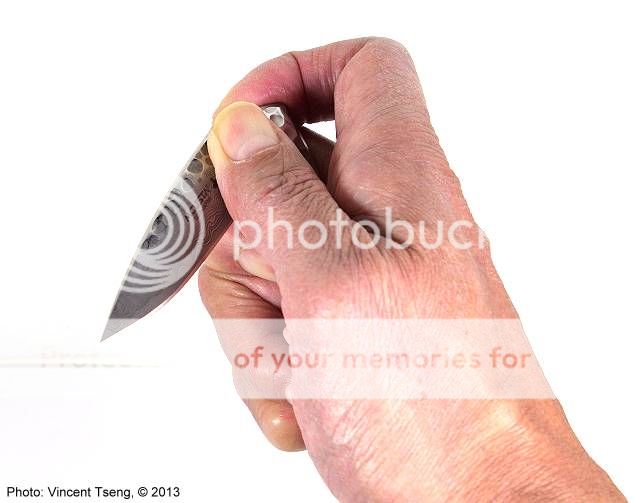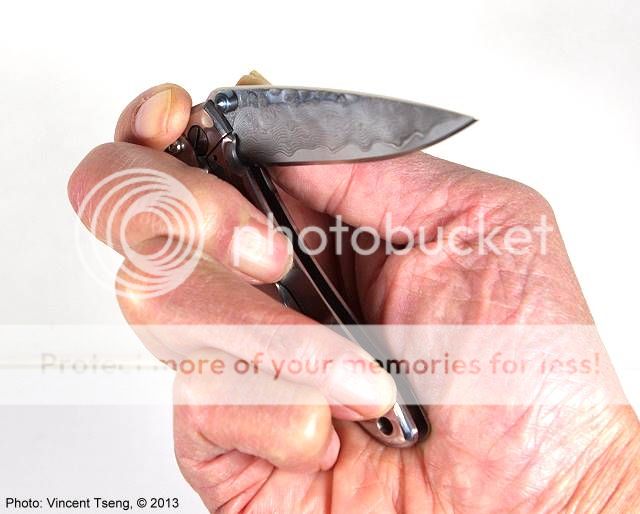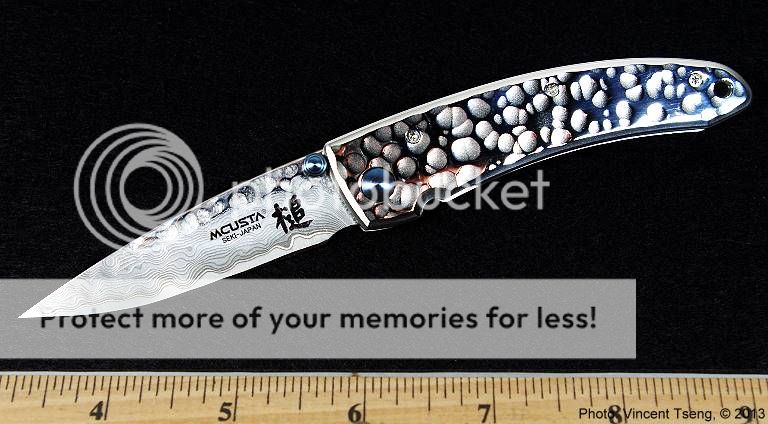
Mcusta 113D - "Tsuchi"
The problem with the name Tsuchi is that Mcusta have a number of knives that are called "tsuchi".....
The model 113D probably is one of the most appropriate - as both the blade and the handle are actually tsuchi-me (or tsuchime)
What is tsuchi-me?
Kanji characters are: 槌目 -
槌 is the character on the blade:
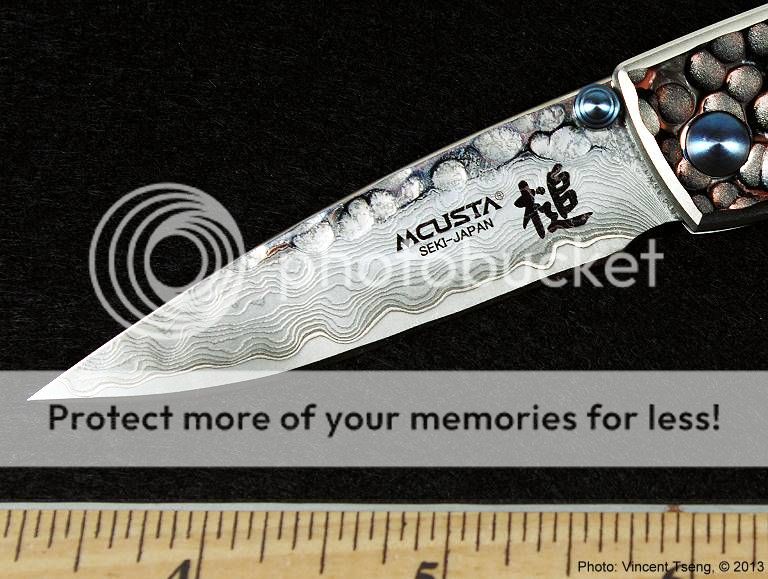
槌 (tsuchi) means hammer or mallet in both Japanese Kanji and Chinese.
目 (me) means eye again in both Kanji and Chinese.
An aside -
My understanding of Kanji is the use of Chinese characters in Japanese.
and although in this case the meaning is the same, sometimes they can bear almost no resemblance -
not quite so off-topic -
kitchen knife -
in Kanji is: 包丁 (Hōchō
BUT in Chinese 包丁 (Bāodīng) means Small package.
kitchen knife in Chinese is: 菜刀 (Càidāo)
The second character 刀 (Dāo) is the word for knife (or blade) in Chinese -
Japanese also means blade -
but tends to be sword......
it is the word Katana!
Enough of the aside......
Manually some tsuchime or hammered patterns are done like:

There was another review by evilgreg with some great photos
Look carefully at the handle of his pics -
now examine my top photo - other than different lighting and exposure - the hammered pattern or tsuchi-me are the same......
check any other pic of the Mcusta 113D - Google image search - as long as it's the 113D (and not the larger 114D or black version 114BD) - the tsuchime pattern is the same
so although it may seem that the tsuchi-me are individually hammered - they are obviously not, and are are precisely identically patterned, using some form of template.
The tsuchi-me pattern is also on the blade flat/face of the 113D -
Some more on tsuchime - I first noticed this on kitchen knives (the Shun Premier series may perhaps been one of the first popular brand using tsuchime pattern)
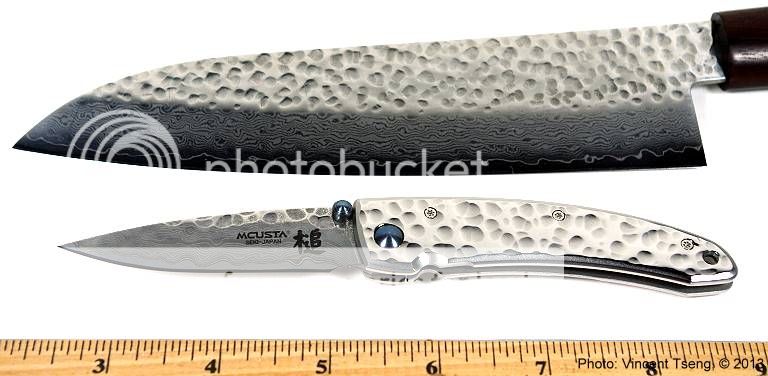
Mcusta 113D with the blade of a SETO I-5 santoku with tsuchime pattern.
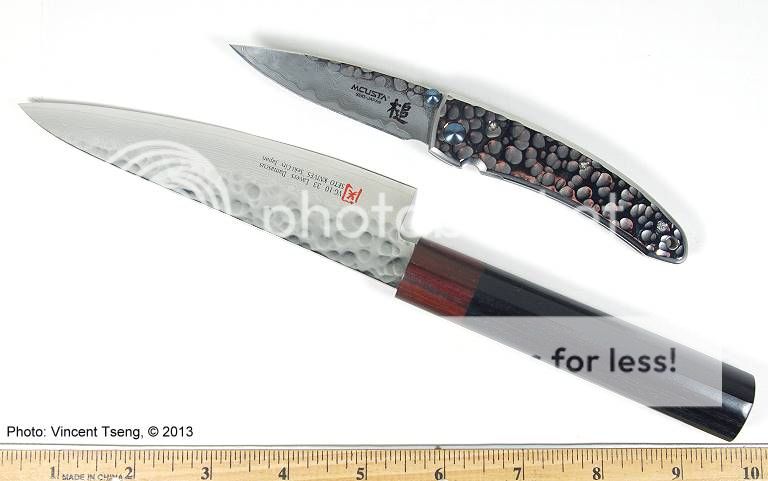
with SETO I-8 135mm mini santoku.
Tsuchime is often associated with a more rustic "unfinished" look -
but not to be confused with kuro-uchi
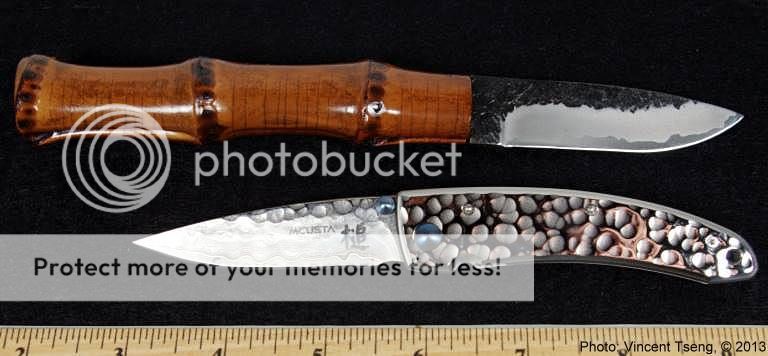
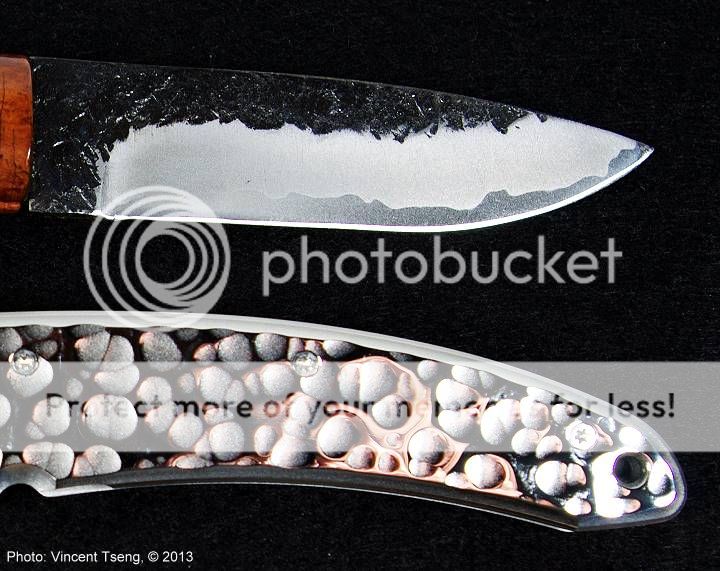
Kuro-uchi is a popular finish on Japanese kitchen knives - where they literally do not finish knives
(so some may have hammer marks - but that is not always the case)
and give the face a black coating - black is the operative word - as Kuro 黒 literally means black.
The "damscus" pattern (which are different for each blade) is particularly pleasing as in the second pic above
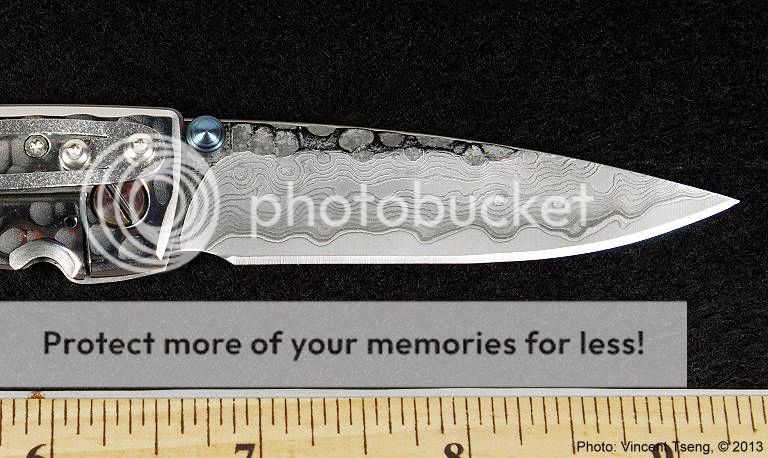
The "damacus" cladding is nickel (Ni) and steel and then probably etched so that the nickel pattern lines are raised.
A word/clarification about the used of "damacus" (I'll stop using the quotes after this) -
strictly speaking these are not true damascus blades -
but a core steel (in this case vg-10) clad with layered steel/metal, and worked to give a damascus like pattern -
This method is now so prevalent in kitchen knives, and are almost always called damascus without any further qualifications.
We can remain pedantic and make a distinction -
but I much rather just go with the colloquial/popular usage -
and distinguish the real damascus steel by deliberately using a qualifier like true or real.
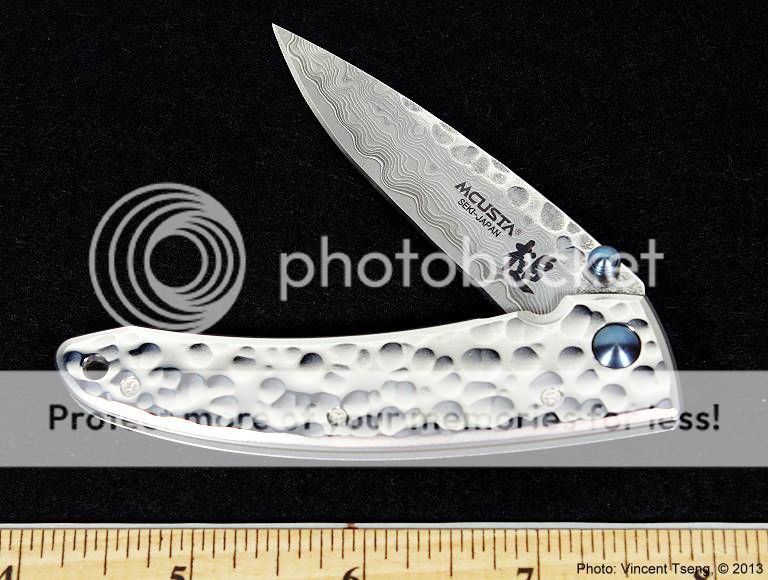
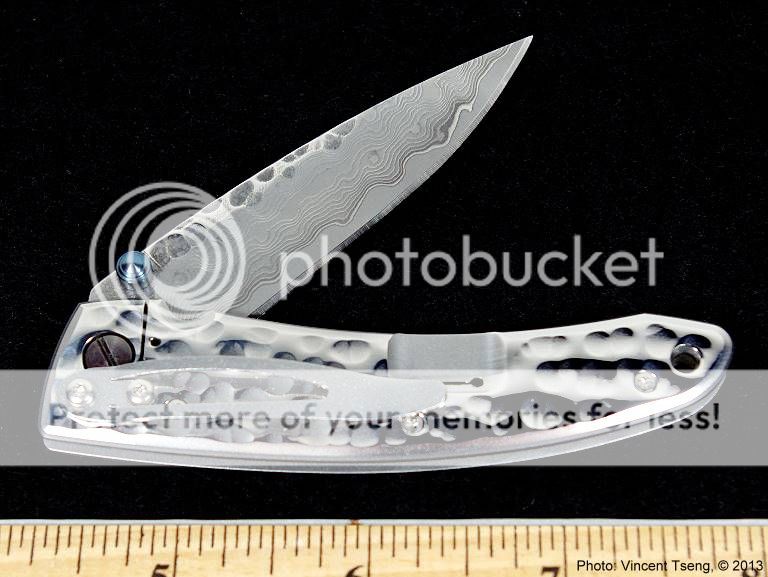
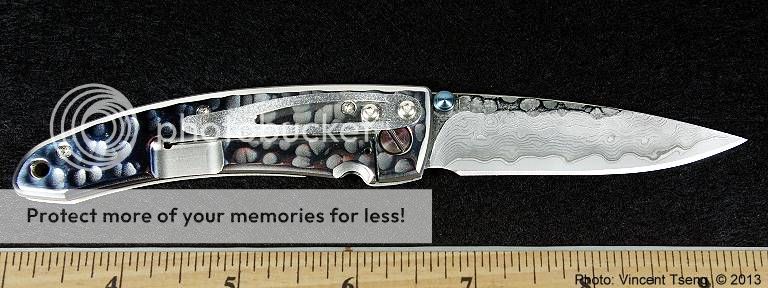

The Mcusta 113D is the small version in the MC-11 series - 3.5" closed, with a 2.75" blade, and solid 420J2 stainless steel handles -
it's about the same size as a regular SAK (Swiss Army Knife)
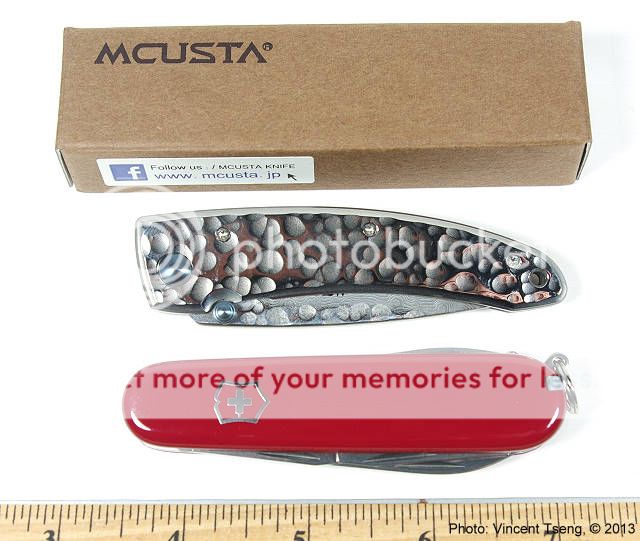
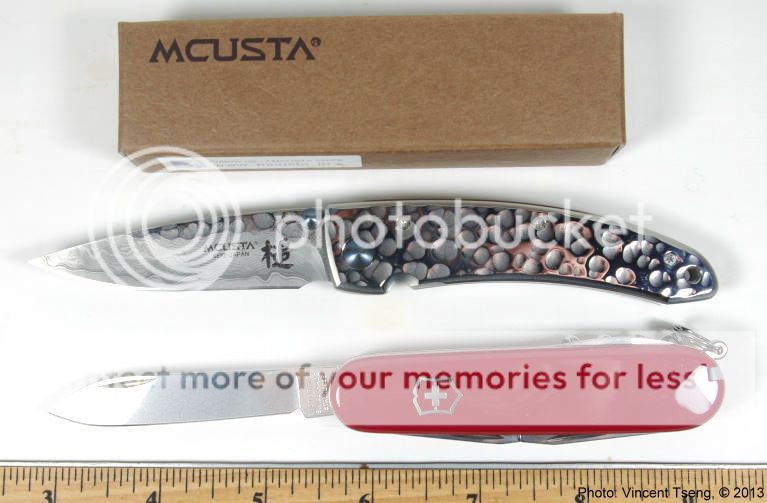
Compared with other known popular knives:
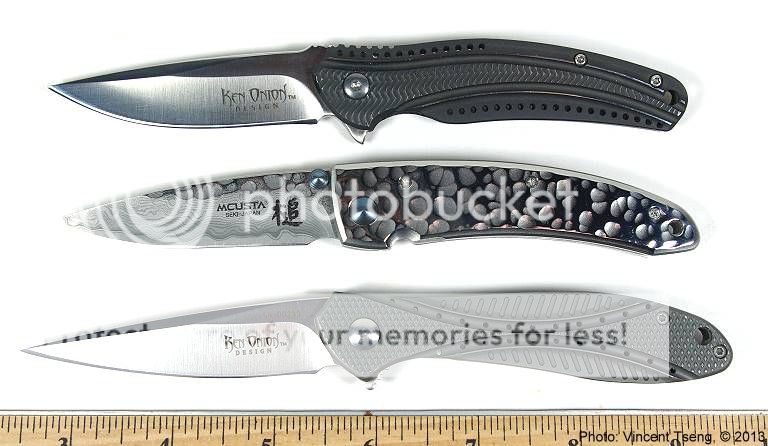
compared to CRKT Ken Onion Eros (large) and steel Ripple (small)
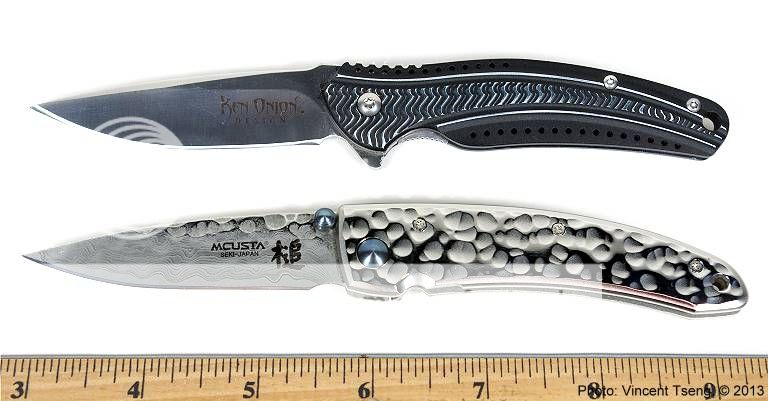
compared to what I think is one of the best values around the CRKT Ken Onion Aluminum Ripple (small)
Having solid 420J2 steel handles makes it pretty heavy for its size at 2.60oz compared to the same sized CRKT Ken Onion Aluminum Ripple (small) 1.79oz
to be fairer compared to the all steel version 2.23oz and even the standard SAK - the Victorinox Spartan 2 layers - 2.08oz.
This also means the 113D is a frame-lock -
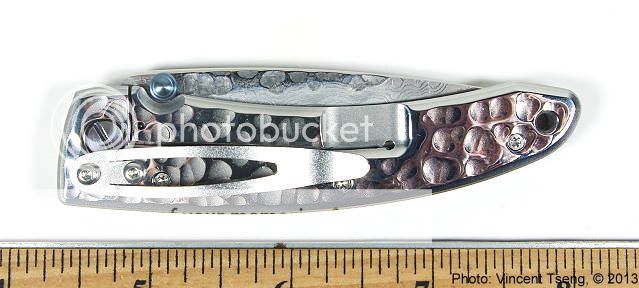
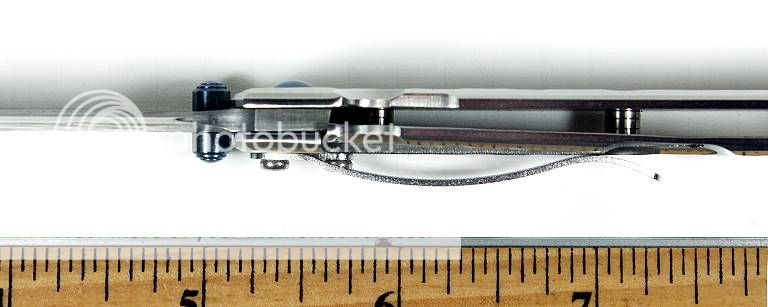
the lock-up is just shy of half-way which means it has room for long term wear.
The fit and finish of the knife are all first class -

blade lines up straight with the handle
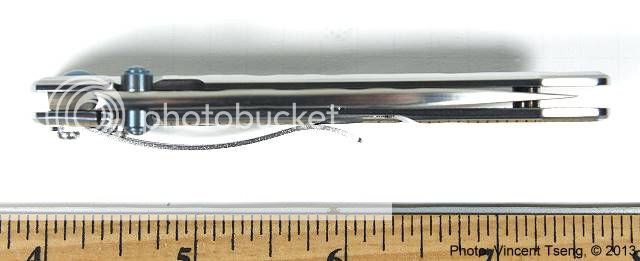
blade is well centered in the handle closed.
The action is very smooth - a bit on the stiffer side - the smaller size and the way the thumb-stud is recessed when closed means one has to get used to the configuration to open the blade well -
but once that's done it is easy and very smooth.
The blade is sharp, very sharp
it has an acute bevel typical of a lot of fine Japanese knives -
perhaps not quite as sharp as my Japanese kitchen knives which are thin and taper well toward the edge -
but now we are talking of a very high degree of sharpness -
to even mention the Mcusta 113D sharpness in this context, shows how sharp the knife is.
All in all this is a real gem of a knife and one of the best shining examples in the Mcusta damascus range.
small note -
the MC113D may be hard to find right now along with the larger 114D and black version 114BD -

the shortage may only be temporary - as the main distributor has said they will be back sometime at the end of November to the middle of December.
--
Vincent
http://picasaweb.com/UnknownVincent?showall=true
http://UnknownVincent.Shutterfly.com
http://UnknownVT.Shutterfly.com
Last edited:





